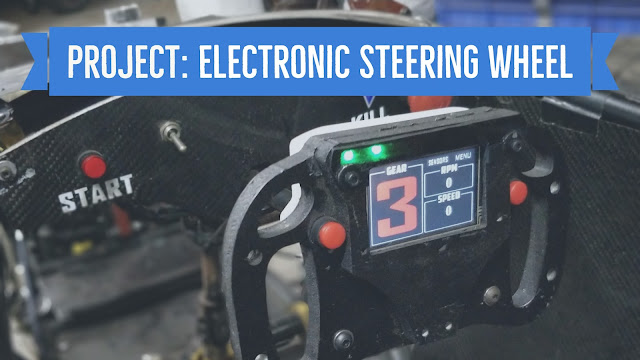Arduino 101: Tutorial #5 |Our First Circuit|
Hello people!
In this tutorial we will be making our first circuit with the arduino(Yayyy!). We will learn how to connect an external LED with the arduino and make it blink, just like we did in our first tutorial with the inbuilt LED. So let's get started.!
Suggested Reading
If you aren’t familiar with the following concepts, I recommend checking out these tutorials before continuing.- Electrical Engineering Basics: Ohm's law, voltage, current, resistance.
- Working With Breadboards
Theory
- Diode: A diode is a component that allows current to flow only in one direction. Hence, in electric circuits, a diode can be thought of as a one way check valve, that permits the flow of current only in one direction. There are other types of diodes too, performing different functions, but these are the ones that we'll be using most commonly in our arduino circuits.
- LED: LED stands for light emitting diode. The two terminals of an LED are called anode and cathode. The longer terminal of an LED is usually an anode. As we discussed, that a diode allows current to flow only in one direction, hence if you plug an LED backwards, it won't work, but it won't destroy the LED either. But the one thing that will surely destroy the LED, is by plugging it directly to positive and ground. This will make too much current to pass through the diode and destroy it.Therefore, an LED is almost always used in series with a resistor to limit the current in the circuit and prevent the diode from burning.
- Breadboard: A breadboard, also known as a prototyping board, is used as a construction base for electronic circuits. To learn more about breadboards, you can check my tutorial on breadboards here.
Making the Circuit
- Consider the image below and follow the steps as described.
- Take a wire and connect the pin 13 of the arduino to the bottom most row of the breadboard.
- Take another wire and connect the ground pin(GND) of the arduino to the row above the bottom most row of the breadboard. Lets call this row the "ground row" for the rest of the tutorial.
- Connect a 330 ohm resistance to the ground row and terminal b1 in the breadboard.
- Connect the cathode(shorter leg) of the LED at c1 and anode(longer leg) at c2.
- Now, take another wire and connect b2 to the bottom most row of the breadboard.
- Now, let us upload the same code that we discussed in tutorial #1 to the arduino.
If you did all the steps exactly as described in this tutorial, you will see the LED blink with a delay of 1 second. Watch the video below. If the LED does not blinks, check all your electrical connections and make sure you've not plugged the LED backwards.
And with this, we end our tutorial here.
I hope you enjoyed the tutorial. If you have any suggestions/complaints or questions feel free to comment below. :)





Comments
Post a Comment